Trinitite is a unique and fascinating glass-like substance that was borne from the rapid and intense heat of atomic testing. It’s named after the site of the first nuclear bomb detonation at the Trinity site near Alamogordo, New Mexico, on July 16, 1945.
The intense heat from the explosion melted the surrounding sand, soil, and rock, creating a glass-like mineral, rich in history and controversy. This glassy residue not only provides a tangible link to a pivotal moment in modern history, but also quickly became a highly sought after item for collectors who flocked to the testing site to find it.
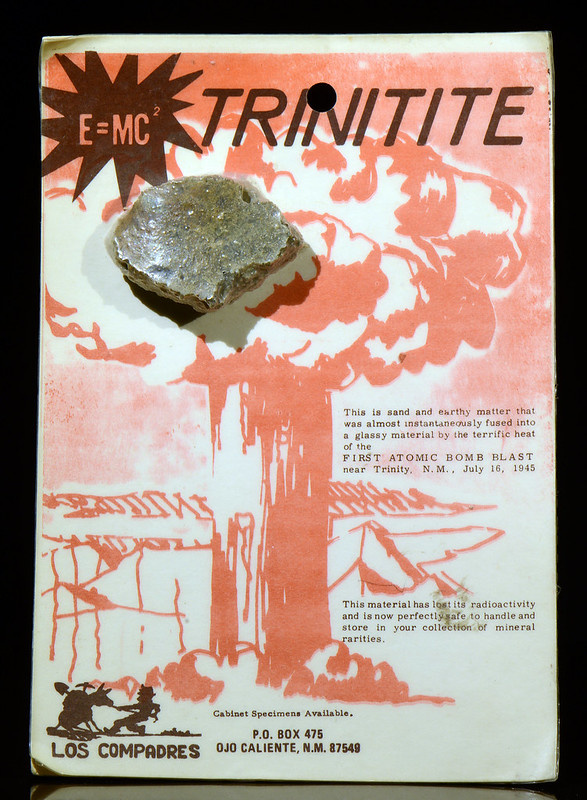
Collecting Trinitite became illegal in 1952 when the Army bulldozed the Trinity site due to concerns about its residual radioactivity and prohibited the collection of Trinitite to control its distribution
Trinitite not only caught the attention of collectors, but scientists as well due to its unique properties and formation process. Its existence presented a rare opportunity to study the effects of high-pressure, high-temperature conditions.
New discoveries are still being made even recently when it comes to Trinitite. As recent as 2021, scientists discovered that Trinitite contains quasicrystals which have a structure that is orderly like normal crystals but they don’t repeat.
The Discovery of Trinitite
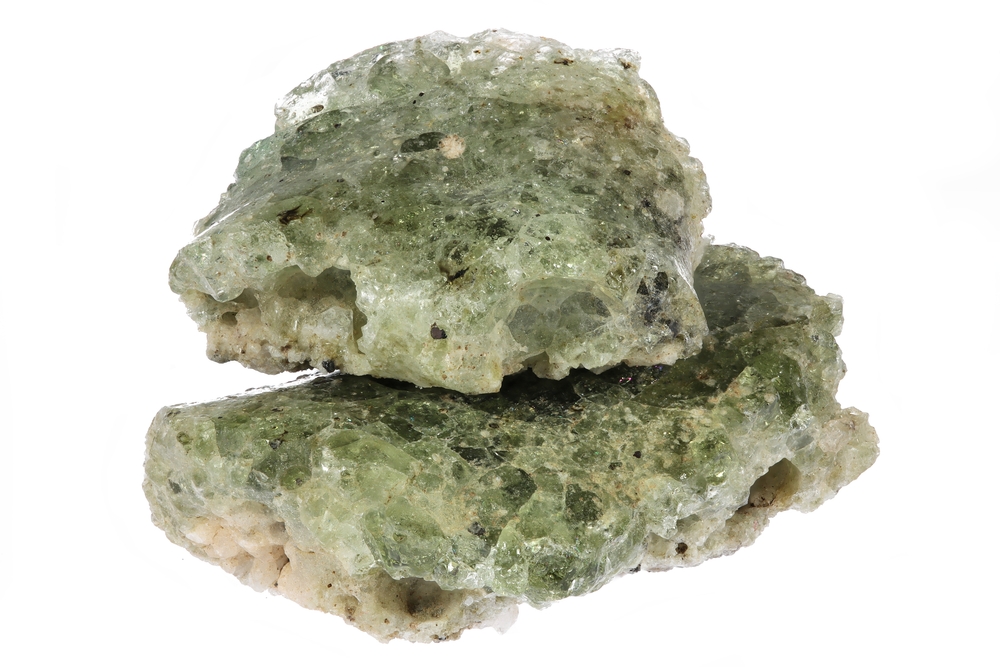
Atomic Bomb Testing at Trinity Site and The Birth of Trinitite
The atomic age ushered in a new chapter on July 16, 1945, when the first nuclear bomb test, codenamed “Trinity,” was detonated in the New Mexico desert at the Alamogordo Bombing and Gunnery Range.
This test was a part of the larger Manhattan Project, a research and development undertaking during World War II that produced the first nuclear weapons.
During the explosion, the immense heat and pressure literally fused the desert sand into a green, glass-like substance initially named “Atomite.”
Later known as Trinitite, this material was primarily composed of quartz feldspar, and other minerals found in the desert sand, which were melted by the thermal radiation from the bomb. Trinitite is radioactive and has a characteristic light green color, although its shades can vary.
Physical and Chemical Properties
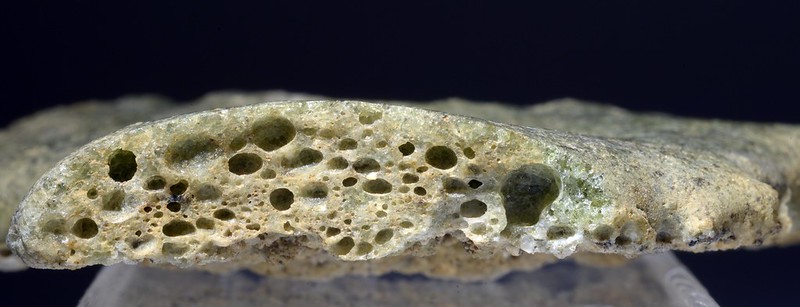
Trinitite predominantly comprises fused arkosic sand. The primary components include quartz and feldspar, with its hardness comparable to that of typical glass.
Its density ranges between 2.4 and 2.6 grams per cubic centimeter, encapsulating various irradiated materials.
Readers interested in the provenance and details of Trinitite can access a dedicated study through the PDF source on its characteristics.
Radiation Concerns
One of the first things people think about when it comes to Trinitite is the topic of radiation. Initially highly radioactive, over time Trinitite’s levels of radioactivity have subsided but it still emits low levels of radiation due to the presence of isotopes like americium-241.
Handling trinitite is generally considered safe, but long-term exposure should be avoided. Special care must be taken when storing and displaying Trinitite collections to ensure safety.
Color Variations
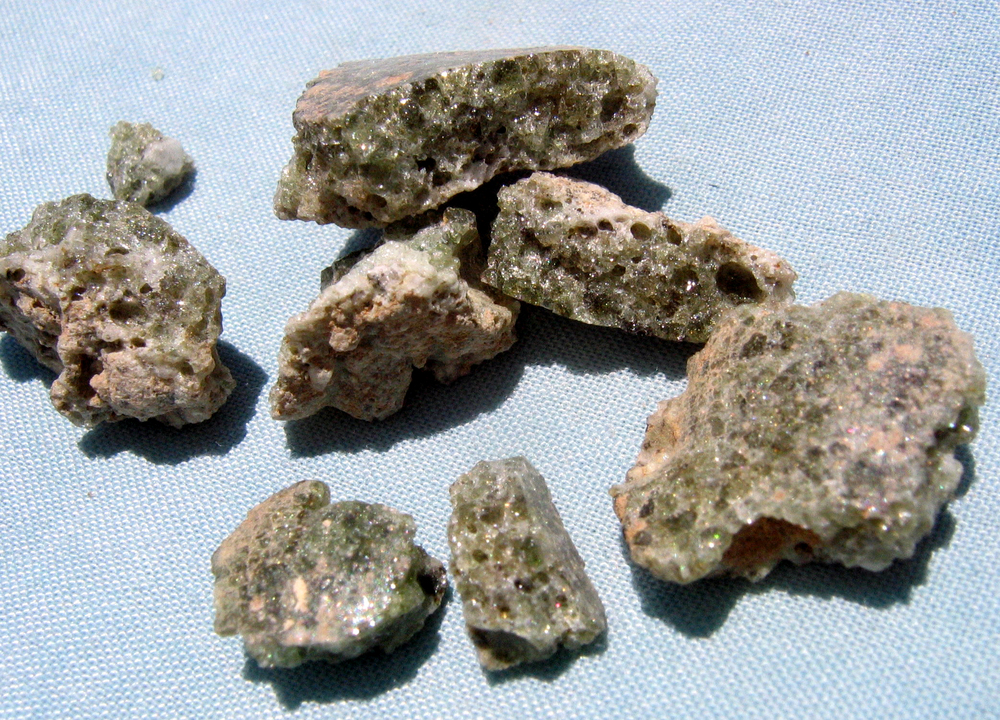
Trinitite is not uniform in color; its hues range from pale green to a deeper, olive green, and sometimes even black.
The coloration of Trinitite is influenced by several factors, such as the presence of iron or other materials in the sand at the time of the blast. The variations in Trinitite’s color can also provide clues about the conditions of its formation, with different shades corresponding to various distances from the blast’s epicenter.
Collection and Legality
As you can imagine, Trinitite has piqued the interest of many collectors. However, laws and safety concerns must be considered when handling and acquiring this unique mineral.
Legal Restrictions
It is vital to understand that collecting Trinitite from the Trinity site is prohibited, as it is a part of the White Sands Missile Range and is under government control. However, it’s not against the law to own Trinitite and must be obtained from authorized sources outside the protected area. It’s crucial to verify that any pieces for sale have been collected legally, for obvious reasons.
Safe Handling Practices
Trinitite is generally considered to be marginally radioactive, not posing a significant health risk if handled correctly. Nonetheless, collectors are advised to:
- Store Trinitite in a safe place where it won’t be handled frequently.
- Use protective gloves during handling to minimize direct contact.
- Avoid inhaling dust or particles that may come from the sample.
Acquisition and Trading
For those interested in getting their hands on Trinitite themselves should seek out reputable dealers or trade shows specializing in mineral specimens. Before completing a transaction, you want to be sure to ask for:
- Documentation or provenance that verifies the legal collection of the specimen.
- A detailed description of the specimen’s condition and any safety information.
Caring for Trinitite Collections
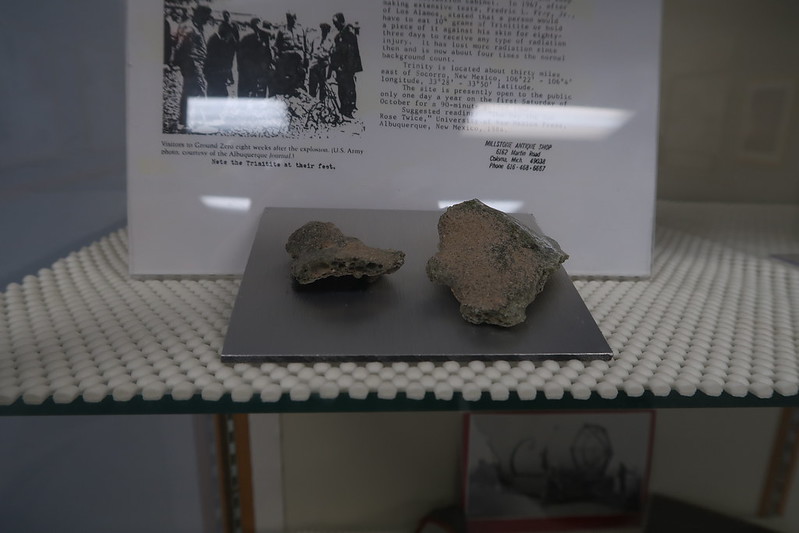
If you’re able to get your hands on a trinitite specimen, you want to be sure to prioritize the preservation of the specimen to maintain its integrity and also its historical value. The same holds true for any mineral specimen you collect.
Preservation Tips
- Handling: Always handle trinitite with clean, dry hands or with gloves to prevent oils from transferring to the specimens.
- Storage: Keep trinitite in a cool, dry place away from direct sunlight. Use acid-free containers to avoid chemical interactions with the container’s material.
| Environment | Description |
|---|---|
| Humidity | Keep humidity levels low to prevent moisture-related damage. |
| Temperature | Stable, moderate temperature is ideal for long-term storage. |
| Light | Minimize exposure to strong light to avoid color fading. |
Displaying Your Collection
- Cases: Utilize display cases that offer UV protection to safeguard the trinitite from light damage.
- Support: Provide adequate support for each piece to prevent scratches or chips. Use custom mounts if necessary.
By making sure the trinitite is displayed in a controlled environment can not only prolong the life of the specimens but also enhance the viewing experience for enthusiasts and casual observers.

